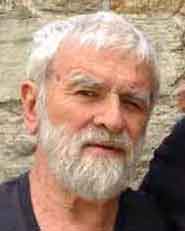Generally, it is a fallacy to dismiss a conclusion of an argument because the argument is fallacious. In other words, a person may be defending something which is true or sensible, but for bad reasons. Also, it would be some kind of fallacy of bad association to think that because a person is wrong about some subject X, that this person is also wrong about subject Y.
Specifically, I reject superstitions, including religions. So for me to ignore writers who proclaim an adherence to a religious faith, is narrow minded.
For a bird’s eye view of Distributism, let’s start with the Wikipedia entry: Distributism. [It is generally wise to start an investigation by looking at a Wikipedia entry. But it is foolish to stop there.]
I found the following video on G. K. Chesterton by Laurie M. Johnson helpful — though I would like to add some commentary later on. She is talking about the following book: G. K. Chesterton, THE OUTLINE OF SANITY, 1927.
Introduction to G.K. Chesterton and Distributism
This video introduces you briefly to GK Chesterton and then discusses his definitions of Capitalism, Socialism and Distributism. I point out that Aristotle’s views on property in The Politics may be the origin of distributist thought, and give some background information that may help understand why Chesterton defines Capitalism and Communism as he does. Chesterton criticizes Capitalism for really being “Proletarianism” or a system of wage dependency. He criticizes Socialism for being dangerous because it places all resources and decisions into the hands of the state. Both of them concentrate property into a few hands, whereas Distributism calls for spreading property ownership more evenly. Spain’s Mondragon corporation is used as an example of contemporary distributism at work.
More of her videos on Distributism can be found here: Laurie M. Johnson
Commentary:
In the above video, Laurie Johnson claims that Chesterton did not really mean that everyone should have 3 acres and a cow. Well, what he probably meant is that people should have a private plot sufficiently large for self-sufficient subsistence. But Laurie thinks that this today is unrealistic, and offers a worker-owned enterprise such as the Mondragon Corporation as an example of Distributionism. Well, this may be Laurie’s proposal, but it was not what Chesterton had in mind.
However, in the following video with her participants she is more reflective of what is involved in sustaining subsistence farming (as in India), and the problems involved in switching to a more agrarian form of life.
